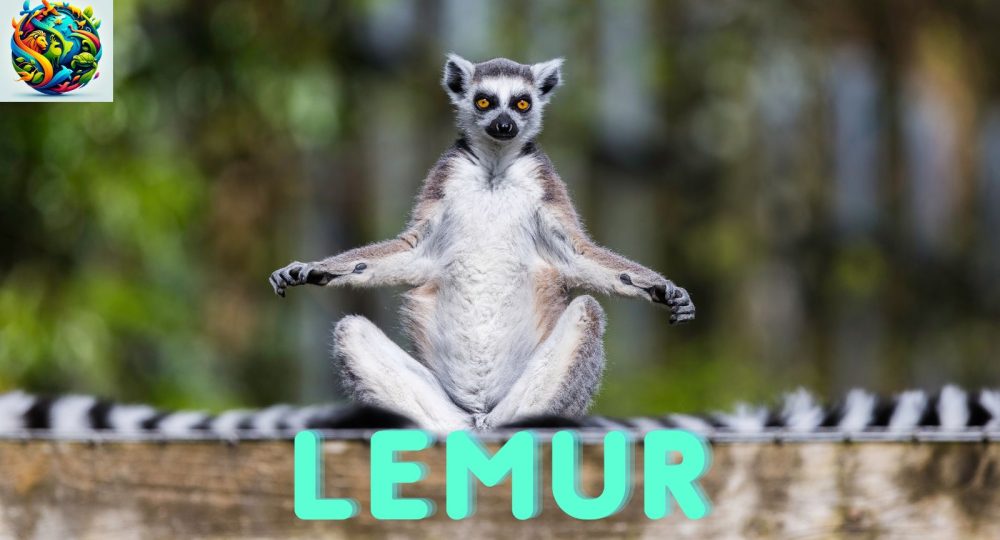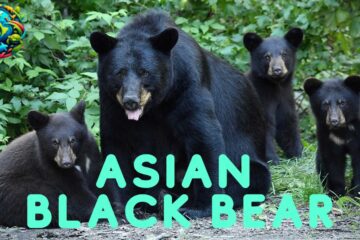Lemurs: Marvellous Primate of Madagascar

Lemurs: The Marvellous Primate of Madagascar
Lemurs, with their wide, reflected eyes and expressive faces, are among the most interesting primates on Earth. Native exclusively to the island of Madagascar, these species are as diverse as they are charismatic, serving essential roles in the island’s ecosystems. This article looks into their world, covering their distinct qualities and behaviours and the conservation issues they confront.
Introduction
They belong to the infraorder Limuriformes and are a showcase species for Madagascar’s biodiversity. They have developed in relative isolation for millions of years, resulting in a diverse diversity of species that vary substantially in size, nutrition, and habit. Unfortunately, they are also among the world’s most endangered primates, mostly owing to habitat degradation and hunting.
Amazing Facts
They feature a peculiar dental modification known as a “toothcomb,” a set of lower incisors and canines that are tightly spaced, projecting forward, and useful for brushing fur and digesting particular foods. This characteristic, paired with their unique claw on the second toe of their hind feet, lets them to preserve their distinguishing fur and social relationships through grooming.
Food and Habitat
They occupy the different habitats of Madagascar, from rainforests to dry deciduous woods and prickly deserts. Their diet varies greatly among species, ranging from fruits and leaves to insects and tiny vertebrates. Some species, like the ring-tailed, have a widely varied diet, while others, such as the bamboo lemur, specialise in ingesting specific varieties of bamboo.
Appearance
Their appearance can vary greatly across species. Sizes range from the tiny mouse species, which may fit in a human hand, to the huge indri, which can grow as tall as a human kid. They often include a pointed snout, huge eyes for nocturnal vision, and a long, bushy tail. Their fur colours and patterns also vary, providing camouflage within their unique habitats.
Types and subspecies of Lemurs
There are almost 100 known species of lemurs, classified into five families:
- Indriidae: Includes the indri and sifakas, notable for their huge size and strong, leaping movement.
- Lemuridae: home to the ring-tailed lemur and the ruffed lemurs, distinguished by their long, striped tails and loud sounds.
- Cheirogaleidae: contains the tiniest species, including mouse lemurs and dwarf lemurs.
- Lepilemuridae: the sportive lemurs, which are nocturnal and have strong hind legs for leaping vertically through trees.
- Daubentoniidae: Contains only the aye-aye, distinguished by its rodent-like teeth and long, slender middle finger used for foraging.
Predator and Threat
They face natural predation from fossas, birds of prey, and snakes. However, the most important dangers to their survival are human-induced, including deforestation, habitat fragmentation, and poaching. These pressures have led to severe decreases in lemur populations, with many species becoming critically endangered.
Mating
Their mating systems vary from monogamous pairs to polygynous groups, depending on the species. Most lemurs have a breeding season, frequently timed with the rainy season when food resources are more available. Females normally give birth to one or two babies, which they care for with great attention, often with the support of other group members in some species.
How Lemurs Communicate
They communicate using a combination of vocalisations, scent marking, and body language. Calls can communicate an alarm, establish territory, or strengthen social relationships within groups. Scent marking via glands placed on their wrists, chests, or genital areas plays a key part in social and territorial interactions.
Conservation Efforts
Conservation activities for them include habitat preservation, reforestation operations, and the construction of protected areas and reserves. International collaboration and local community engagement are vital for effective conservation, as is research to better understand lemur ecology and behaviour.
Pronunciation in Different Languages
- Spanish: lémur
- French: lémurien
- Mandarin: 狐猴 (hú hóu)
- German: Lemur
- Malagasy: maky
They are not just a symbol of Madagascar’s remarkable variety but also a reminder of the delicate balance of ecosystems. Their existence depends on concerted global and local efforts to safeguard and restore their natural habitats while addressing the core causes of their endangerment.
FAQs
What makes them special among primates?
- Answer: They are unique for their varied variety of adaptations, including their toothcomb for grooming and nocturnal eyesight. Their evolution in isolation on Madagascar has resulted in a remarkable array of species with unique ecological niches.
Why are they endangered?
- Answer: Habitat destruction via slash-and-burn Agriculture, logging, and mining, as well as hunting and the pet trade, chiefly imperil them. Conservation activities are vital to their survival.
Can they be kept as pets?
- Answer: Keeping them as pets is highly discouraged. They have complicated social and dietary needs that are difficult to address in a household context. Additionally, the pet trade contributes to their demise in the wild.
How can I help with their conservation efforts?
- Answer: Supporting organisations dedicated to lemur conservation, promoting sustainable tourism in Madagascar, and raising awareness about the risks they face are effective methods to contribute to their preservation.






